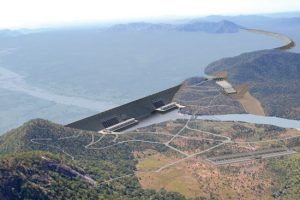 Egypt and Sudan continue to express concern over the potential reduction of their share of the Nile water as Ethiopia’s Grand Renaissance Dam project is about halfway complete and is expected to be operating by July 2017.
Egypt and Sudan continue to express concern over the potential reduction of their share of the Nile water as Ethiopia’s Grand Renaissance Dam project is about halfway complete and is expected to be operating by July 2017.
Egypt has long suspected the dam will reduce its share of the Nile River. Such fears have been downplayed by Ethiopian officials who reiterated that Egypt’s share of Nile water will not be affected by the dam that will help the electricity needs of Ethiopia.
The dam, to be Africa’s largest, has featured prominently in talks between Egyptian president Abdel-Fattah al-Sisi and Ethiopian Prime Minister Hailemariam Desalegn in Addis Ababa on the sidelines of the 28th African Union summit.
Recently, the governments of Sudan and Egypt have accused Ethiopia of introducing modifications on the dam without informing the two countries on the Nile downstream.
Ethiopian media channels, including Ezega news website, reported that the authorities have modified the construction standards of the dam to increase its capacity to generate electricity from 6,000 up to 6,450 megawatts (MW); and that the changes are dependent on an increase in the number of electricity generators.
“Initially, the dam was designed to generate 5,250MW. However, due to the upgrades made to the power plant, its generation capacity was raised to 6,000 MW. Six years later, the total installed generation capacity of the dam has been increased by an additional 450MW as a result of the improvement made on generators to boost the capacity of the power plant,” Ezega said.
In March 2015, Ethiopia, Egypt and Sudan have reached a preliminary agreement to settle their main differences on the Nile water distribution.
Construction at the Renaissance Dam site started in December 2010 after an agreement was reached with construction company Salini Impregilo of Milan, Italy, and Metals and Engineering Corp. of Addis Ababa. The site is 40 kilometers from the Sudanese-Ethiopian border on a tributary of the Blue Nile. The project is expected to store 74 billion cubic meters of water and generate 6,000 megawatts of electricity.
